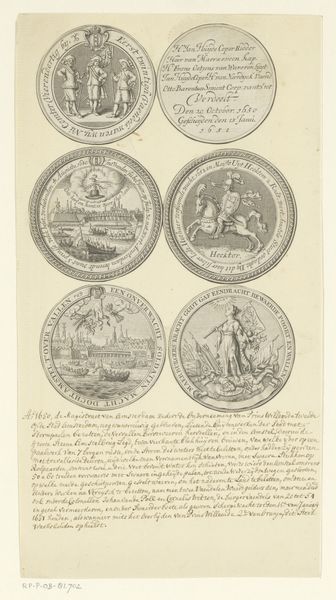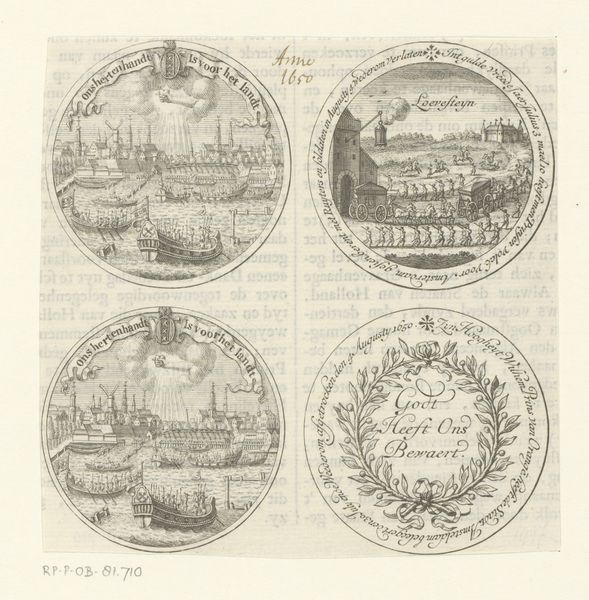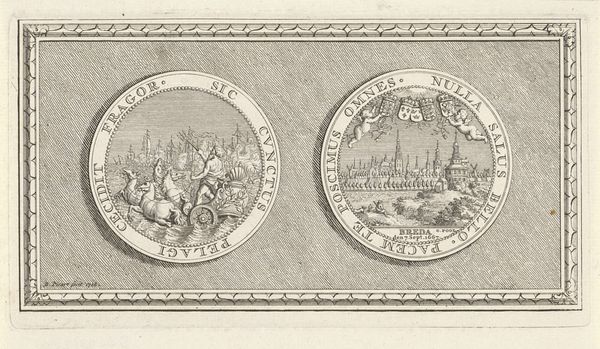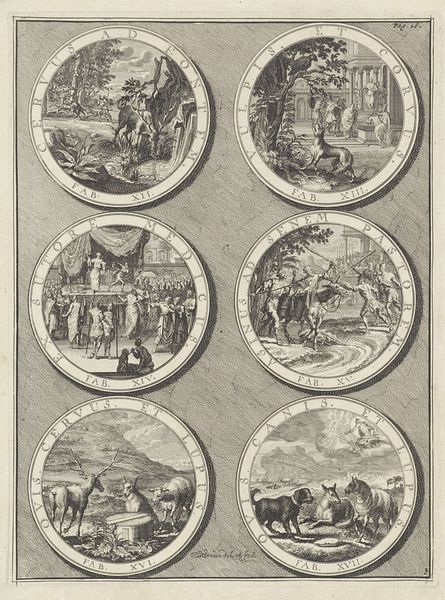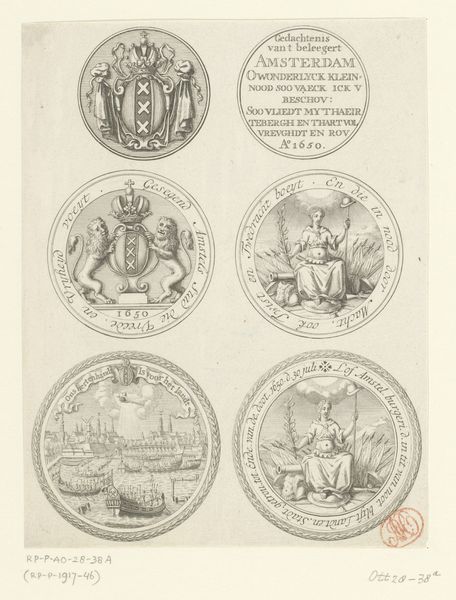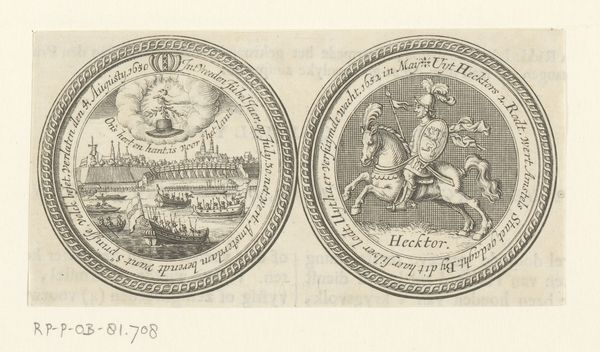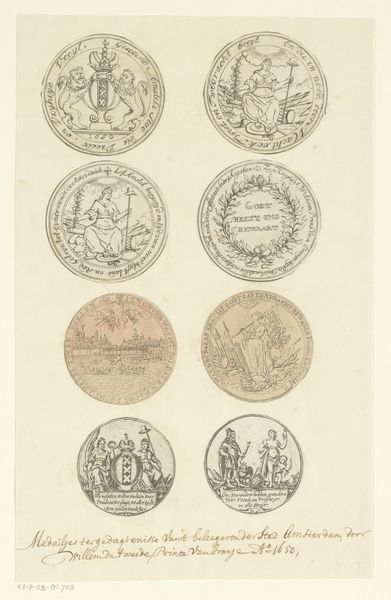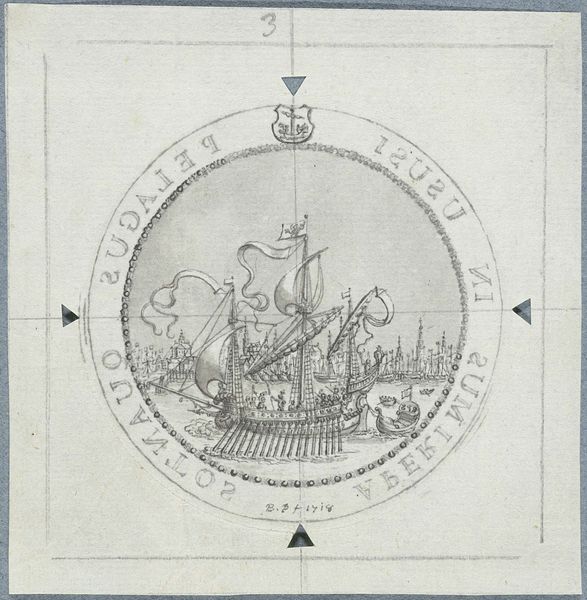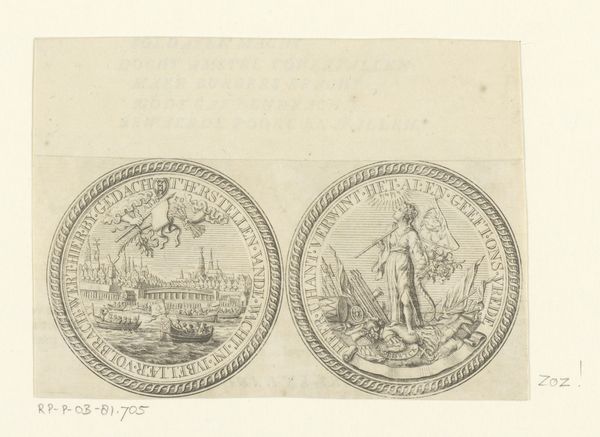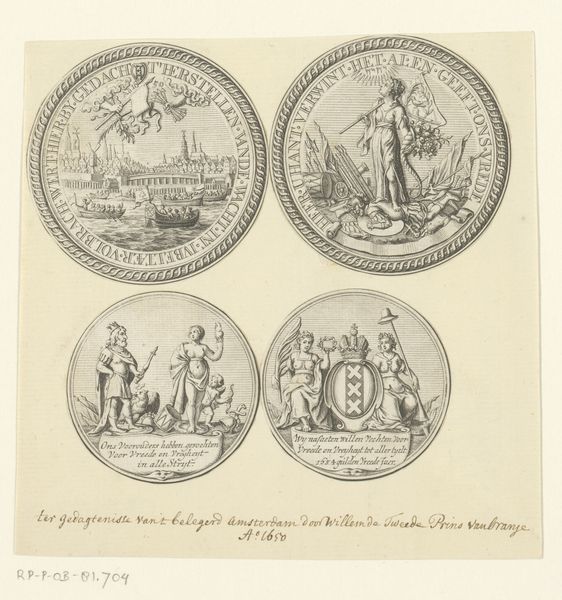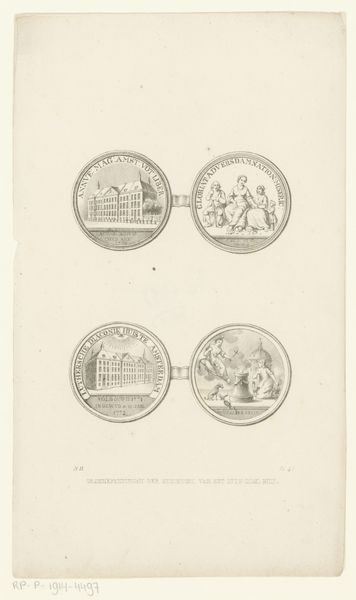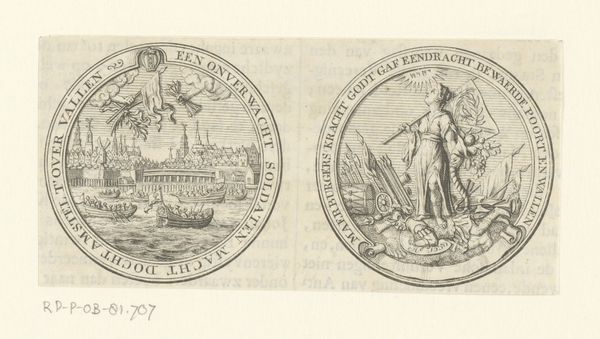
Twee penningen op de inwijding van het nieuwe stadhuis van Amsterdam, 1655 1718
0:00
0:00
print, engraving
#
dutch-golden-age
# print
#
old engraving style
#
traditional media
#
cityscape
#
history-painting
#
engraving
Dimensions: height 203 mm, width 156 mm
Copyright: Rijks Museum: Open Domain
These engravings by Bernard Picart memorialize the opening of Amsterdam’s new city hall in 1655, a period known as the Dutch Golden Age, marked by economic prosperity and extensive global trade. The images here aren't just celebratory; they also reflect the city's complex relationship with its identity and wealth. The medallions are laden with symbolic meaning which underscore Amsterdam's mercantile power and civic pride. The ships, for example, aren't merely vessels of trade; they embody the city's dominance over the seas and, by extension, its access to global resources, which were often extracted through colonial exploitation. It is impossible to ignore that this wealth was built, in part, on the backs of enslaved people and through the exploitation of resources from colonized lands. How does a city reconcile its image of civic virtue with the realities of its economic practices? This work invites us to consider the stories that are told and, perhaps more importantly, the stories that are left out. In its commemoration, does it also serve as a reminder of the cost of progress?
Comments
No comments
Be the first to comment and join the conversation on the ultimate creative platform.
